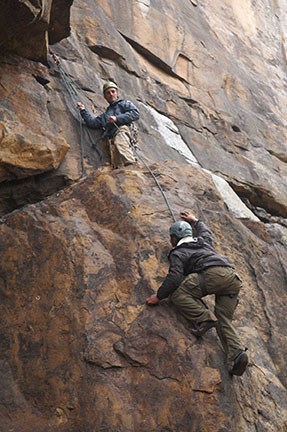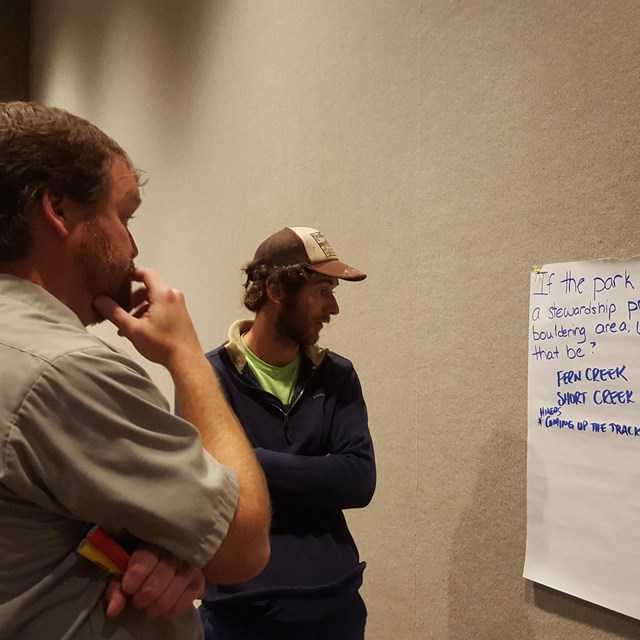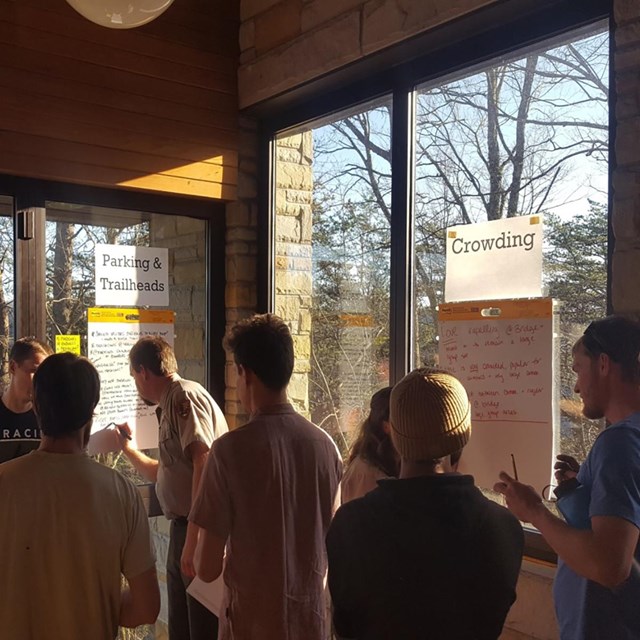
NPS photo/Dave Bieri Within New River Gorge National Park and Preserve are over 1,400 established rock climbs. "The New" has become one of the most popular climbing areas in the country. The cliffs at New River Gorge are made up of a very hard sandstone, and range from 30 to 120 feet in height. The rock is very featured, and an abundance of crack and face routes are available. Most of the routes in the gorge favor the advanced and expert climber. The majority of routes are 5.9 and harder, and most sport routes fall in the 5.10 - 5.12 range. A guidebook is an essential tool for locating climbs, and local climbing shops can offer information and specific recommendations. 
NPS photo Helpful Information for ClimbersClimbing Season Food and Water Showers Camping Private Property Parking and Security Climbing Regulations Over one million people visit New River Gorge each year, thousands of whom are climbers. With this large number of visitors, park issues develop that can only be solved through everyone's cooperation. Briefly, the National Park Service mission is to protect park resources for future generations, while providing opportunities to enjoy these resources at present. This task is obviously a difficult one, balancing resource protection and visitor use. Park managers are concerned about the impacts of visitors and climbers in the areas of soil erosion and compaction, vegetation damage, human waste disposal, cultural resources, and overcrowding. Please do what you can, as a climber, to limit your impact on New River Gorge and preserve it for future generations. There are many areas of private property within the New River Gorge. Always acknowledge the landowners' rights. Respect all gate, fences, and no trespassing signs. Do not trespass on private land! Guidelines and Regulations
Safety First Climbing has inherent risks and hazards, and is a potentially dangerous activity. A variety of skills and techniques are required to ensure a safe climbing experience. Please seek qualified instruction before venturing onto the cliffs. Many of the climbing locations are located miles from roads, and rescue is difficult. Please, climb smart! In case of emergency, call 911. 
|
Last updated: January 31, 2023



